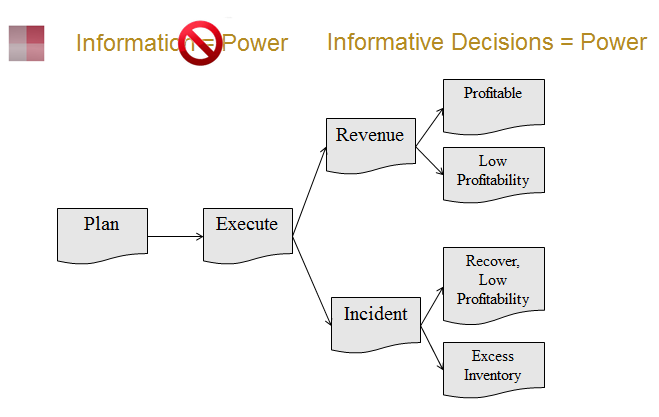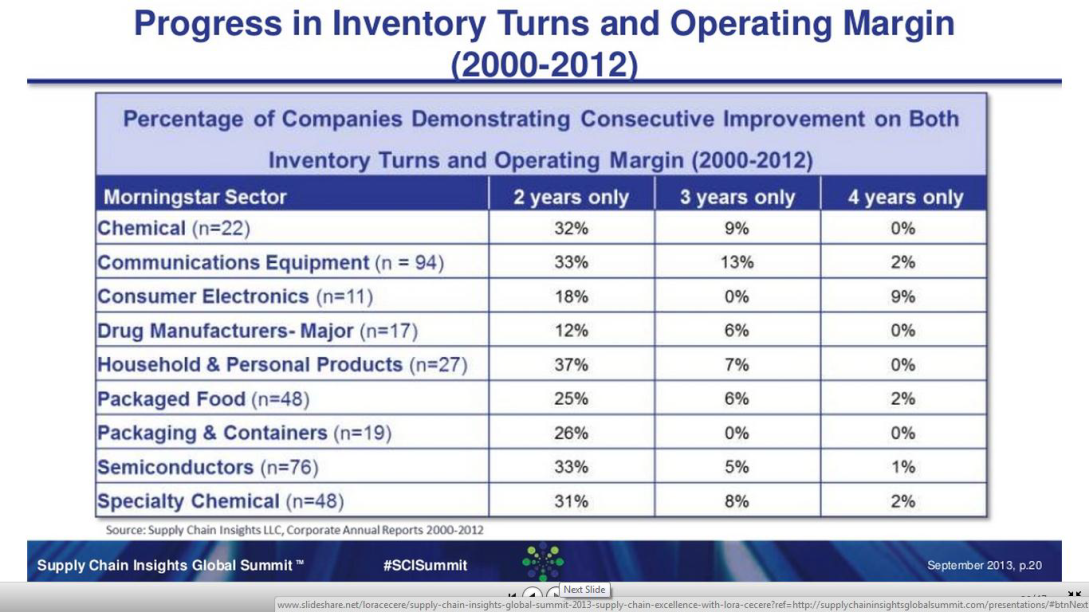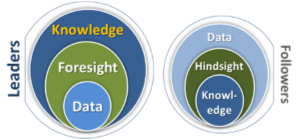It has been said that the business book that most influenced Steve Jobs was ‘The Innovator’s Dilemma’. Considering the success Jobs experienced in his lifetime, I’m intrigued as to what he learned from it. We all know Jobs was a highly successful businessman, for example, Apple stock increased nearly 7,000% during the time Steve returned to Apple in August 1997 until passing the reins over to Tim Cook in August 2011. It made me wonder what this book means to the supply chain business. So I decided to read ‘The Innovator’s Dilemma’. But when I read it, I inserted the word “Supply Chain” where “Product” was mentioned. I’d like to share some insights I gleaned from the book: Clayton Christensen, author of “The Innovator’s Dilemma’ said,
“The reason why successful companies fail is they invest in things that provide the most immediate and tangible evidence of achievement.”
In ‘supply chain speak’, that means the inability to link strategy with execution. Most of us get caught in the day–to-day challenge of running the business. For example, planners spend endless hours on finding and resolving exceptions. There’s just not enough time in the day to focus on strategy and innovation. A very good method I have used when leading supply chain strategies, is to focus on the decisions, rather than the information. Asking, “What margin do I need this network to have for the first three months of NPI?” is better than asking “How can we get safety stock data to match between systems?” Why is this better? I say because of “critical thinking”. Planning is a combination of systems and human judgment. Too many planning organizations rely only on the system output. Yet, with complexity and volatility in today’s global network, critical thinking is just as important to solve the planning challenge. I have a saying: ‘Information isn’t Power, Informative Decisions is Power’. Figure 1 shows a very common supply chain decision flow.
Reactive supply chains manage right to left, meaning the majority of their time is driven by the impact (low profitability, excess inventory, shortage, etc). Predictive supply chains manage left to right, meaning they simulate the plan for desired impact, and then execute. The majority of their time is doing critical thinking and collaborative scenarios. All supply chains bounce between reactive and predictive. However, a heavy focus on reactive makes a more efficient supply chain, and solves today’s issue. However, it doesn’t make for a more effective supply chain or solve forward looking issues such as profitability, total cost to serve and market share. Another good book to read is ‘Profit Mapping’. A quote I really like is:
“We see many instances where a company may have become more efficient when viewed through a process improvement lens, but not necessarily more effective as far as the business is concerned.”
Being more effective at operating margins and inventory turns (two very good supply chain metrics) only occurs with predictive planning and critical thinking. And, while efficient supply chain leaders can improve their KPI’s, most industries find it difficult to sustain that improvement. See the research table from Supply Chain Insights LLC presented at their 2013 Supply Chain Insights Global Summit.
Pretty much across the board, sustaining growth in turns and operating margin beyond three years is not likely to happen. Typically, progress stalls after two years.
The three reasons found to stall progress
1. Functional leadership
Today’s supply chain continues to focus on functional fixes, such as purchasing, logistics, etc. With the network so complex, global, and outsourced, the greater impact is on your ability to manage the end-to-end process. This requires not only visibility of end-to-end, but also, the ability to simulate and collaborate end-to-end. It has less to do about your ERP system, and more to do with the entire network’s planning capabilities.
2. Complexity of systems used
Many companies have multiple systems, multiple ERP instances, and in many cases, functional systems bought for functional purposes. Middleware is everywhere, and spreadsheets rule the day. I’m not talking about the number of systems, because when you think about “end-to-end”, you now include all your 1st and 2nd Tier suppliers, 3PLs, distributors, etc.. Face it, there are a lot of systems. I’m talking about the justification of the landscape. It’s difficult to justify a functional system for an end-to-end process.
3. Lack of a supply chain strategy
I’ve seen many supply chain leaders, while working on a supply chain strategy, get caught in the idea that data needs to be cleaned before innovation. Don’t get me wrong, clean data is a good thing. But, how you go about getting there is the innovation. Rather than spending countless hours of data cleanup, look at your most critical end-to-end processes, ask what knowledge is needed to plan and execute, and pareto the data needed to execute and fix.
The Roadmap to Sustainable Progress
Clayton has a statement in ‘The Innovator’s Dilemma’, “great managers…must first understand what has caused those circumstances and what forces will affect the feasibility of their solutions.” I believe there are three core steps a supply chain can take to achieve end-to-end control. Step 1: Collect end-to-end data, and the policies that drive the data
- Data is good, but the policies that drive the data, especially when considering the time/events that drove the rules, like beginning of the month, last quarter, etc.
- With the end-to-end data, set control limits to the policies. When an issue arises, effective alerts go off, keeping the planners focused on core priorities
Step 2: Improve planning by launching what-if capabilities
- With end-to-end data, you will have exposed the bad data. Start your first simulations around what policies are most impacted with that bad data. This will drive the pareto of what data absolutely needs to be fixed.
- Yesterday vs today: run what if scenarios that tell you each morning what has changed from yesterday, and what are the most critical actions for today.
- Informative decisions: simulate what it would take for higher profit, better turns, less excess inventory, better COGS, etc...
Step 3: Segment your end-to-end priorities
- Segment your products and customers. Simulate various supply chain policies against those segments. Test the attributes that make up each segment
Great supply chains need to align a strategy with the execution. Putting an intense focus on simulation in Planning allows you to prepare in advance of the impacts. And that’s summarized well in the book Profit Mapping:
“a wise manager knows that success only comes with operational excellence that is properly aligned with strategy. The challenge is knowing what actions to take and when to take them – navigating without knowing the impact of your actions on the bottom line is a risk you can’t afford to take.”







Discussions
Leave a Reply